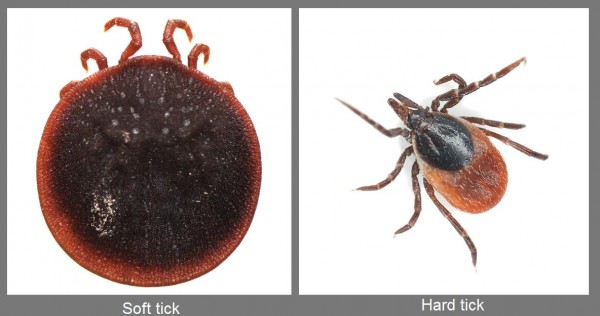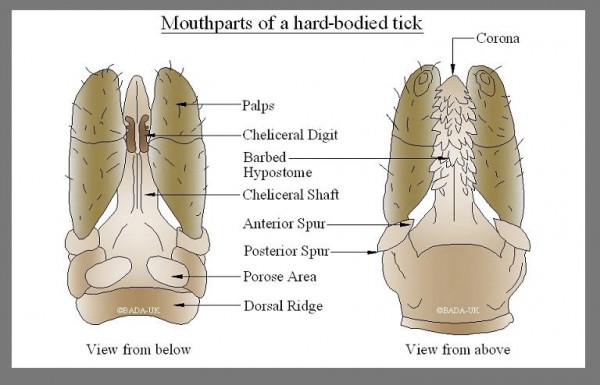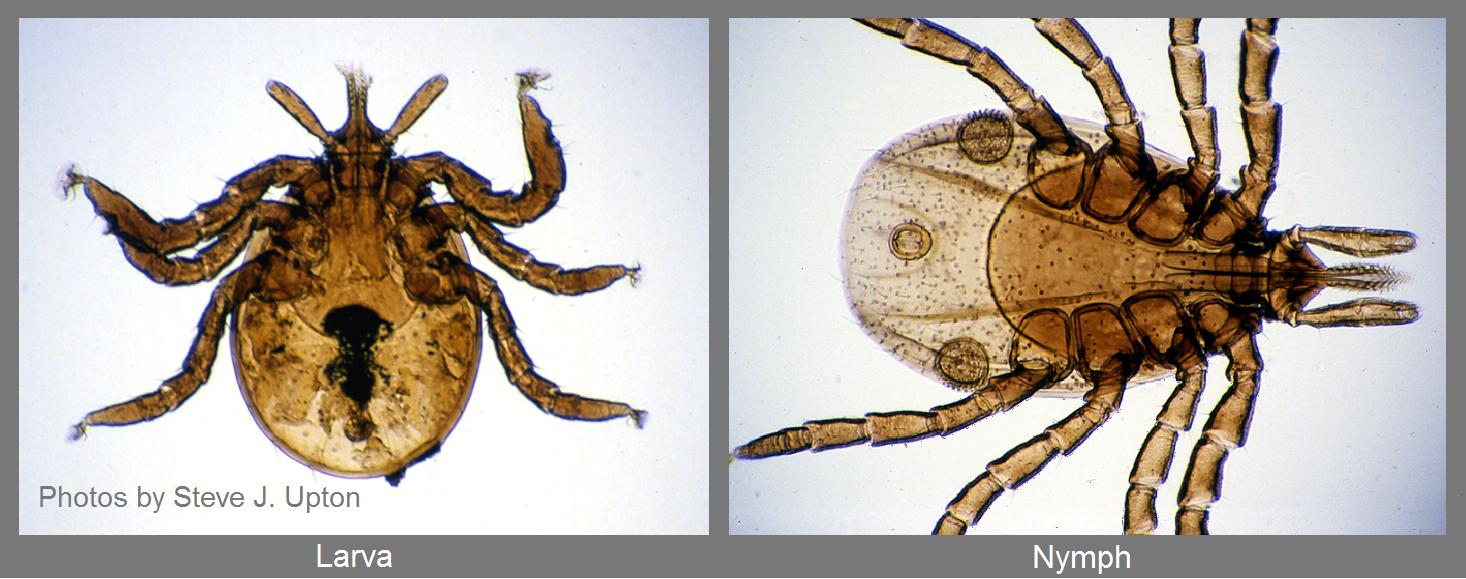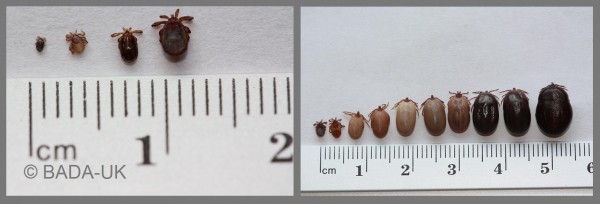Hard tick or soft tick?
Ixodids (hard ticks) differ from argasids (soft ticks) in several ways. They have a plate-like shield on their back (a scutum), which does not stretch when they engorge. This is where they get the name ‘hard tick’.
In females, larvae, and nymphs, the scutum is confined to the anterior (front) part of the body, while in males it covers the whole dorsal (upper) surface. Males, differ from females in that they do not become engorged with blood to the same degree.
Argasids lack the scutum but instead have a leathery or granular dorsal surface, which extends like a hood over the capitulum (the area where the mouth parts are attached). This means that the mouth parts in argasids are only visible from below, while in ixodids they are clearly seen from both above and below.

Soft tick species are usually found around the nesting or roosting areas of birds and bats. Records of argasids biting humans in the UK are rare and usually occur when people enter the habitat of the tick’s host, such as seabird colonies.
Mouth parts
The mouth parts of all tick species comprise 2 palps (limbs with sensory organs), 2 chelicerae (cutting tools) and a hypostome, which is a barbed tube that anchors into the flesh of the host and allows blood to be drawn into the tick. The mouth parts can vary in size and shape depending on the species of tick although some of these differences are too microscopic to see with the naked eye.
Limbs
Tick limbs combine legs and sensory limbs. The legs are segmented with hooks at the ends to grip onto the host and vegetation.

The first pair of the tick’s limbs forms the chelicerae, the second pair forms the palps, which accurately position the capitulum when feeding, and the third to sixth pairs are the legs that are used for walking about. These can be retracted against the body for protection. When a tick is fully engorged with blood, its body swells to such a degree that the legs become situated much closer to where the tick is attached and they can be difficult to see.
Note the Larval stage with six legs, progressing to eight legs at nymph stage.
Shape
Hard ticks are generally flat and oval in shape in their unfed state. Some species, particularly soft ticks, can be more hemispherical or cylindrical. Once engorged, they become rounder (assimilating a coffee-bean) or almost spherical.
Some species have longer legs than others, such as Ixodes vespertilionis (the long-legged bat tick). Soft tick species generally have shorter legs than hard ticks.
Colour
The colouration of ticks varies between species, sexes and states of engorgement. Unfed they are generally reddish, brown or black. Some species are plain in colour, while others have markings. Once engorged, they can be fleshy-pink, purple, dark-red, or a blue-grey colour.

Size
Tick sizes vary considerably between their stages, sexes, species and whether they have fed. One of the most common species to bite and infect people and domestic pets is Ixodes ricinus (also known as the sheep tick, wood tick, deer tick and castor bean tick), which in its larval stage is a tiny 0.5 mm. Nymphs are slightly larger at 1.5 mm, adult males are approximately 2.5 mm, while adult females are about 3 mm. Once fed, each stage will grow considerably. Adult females can expand to approximately 11 mm and increase their body weight to around 250 times its unfed weight.

Further details found by clicking on below links:-








